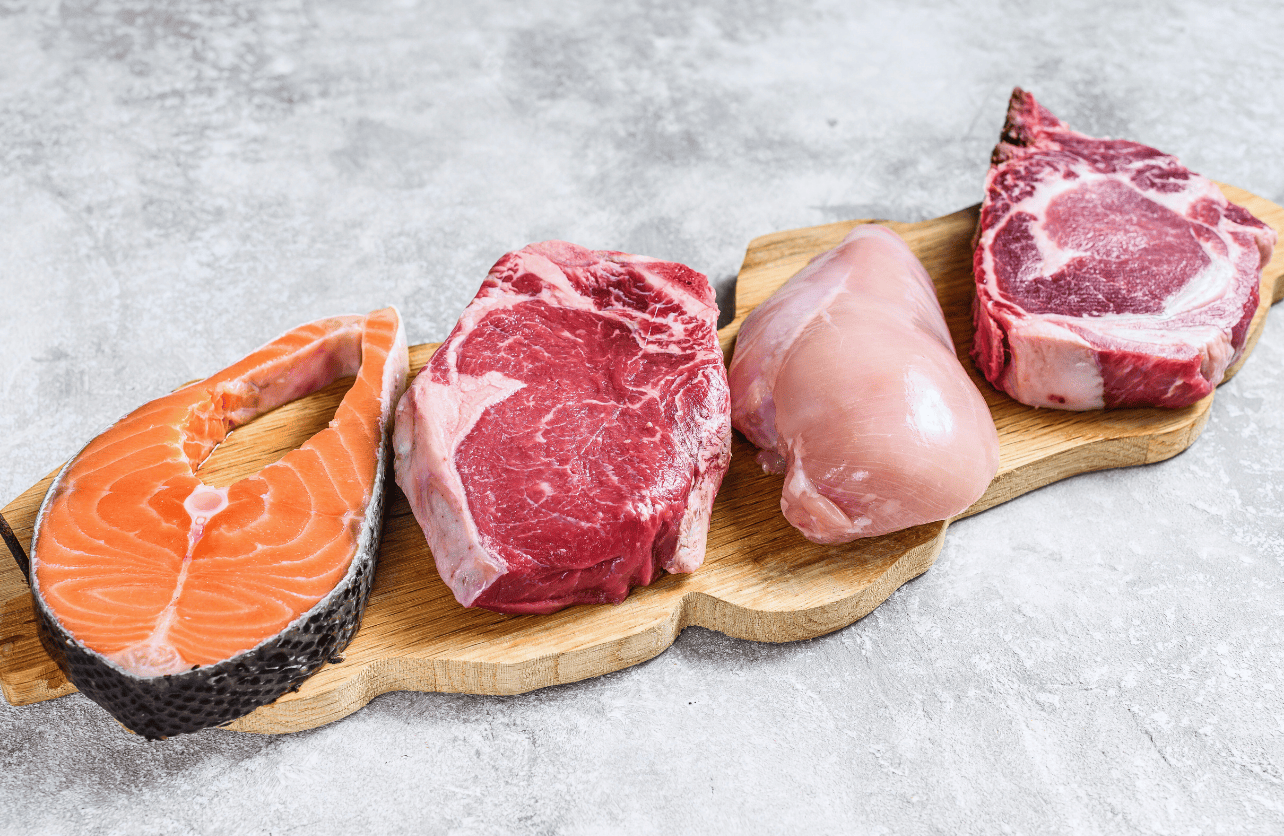What Foods Have Creatine? A Practical Guide to Natural Sources

Creatine is one of the most popular supplements in fitness circles, known for its role in improving strength, endurance, and muscle mass. But what many people don’t realize is that creatine is also naturally found in certain foods. While it’s most concentrated in animal products, the way it exists in the food you eat—and how much of it you actually get—can vary quite a bit.
If you’re looking to increase your creatine intake through whole foods, or just want to understand where it comes from, here’s what you need to know.
Creatine: Not Just a Supplement
Before diving into specific foods, it helps to understand what creatine actually is. Creatine is a compound stored mostly in your muscles, where it helps produce ATP (adenosine triphosphate), the primary energy currency for short, explosive activities like sprinting or weightlifting.
Your body can synthesize creatine on its own, but it also draws from dietary sources to keep muscle stores topped off. The better your muscle saturation, the more effectively your body can regenerate ATP during intense activity. That’s why many athletes turn to supplementation—but whole foods can also play a role.
The Best Natural Sources of Creatine
The richest sources of creatine are animal-based, particularly muscle meats. Here are the top contenders:
Beef
Beef is one of the most accessible and reliable food sources of creatine. On average, raw beef contains about 2 grams of creatine per pound (450 grams). That means a single serving of steak—while it won’t match a supplement dose—can still contribute meaningfully to your daily intake.
The creatine content may vary slightly depending on the cut, but the difference is minimal. Leaner cuts like sirloin offer plenty, and they’re often preferred for lower fat content.
Pork
Pork ranks closely behind beef in creatine concentration. A pound of raw pork provides around 1.5 to 2 grams of creatine. As with beef, cooking method matters—high-heat techniques like grilling or frying can degrade some of the creatine into creatinine, a byproduct your body doesn’t use in the same way.
Fish (Especially Herring and Salmon)
Certain types of fish are surprisingly rich in creatine. Herring is particularly high, with some varieties containing as much as 6.5 to 10 grams of creatine per kilogram. That’s more than you’d get from most red meats.
Salmon and tuna are also strong choices, offering both creatine and high-quality protein with the added bonus of omega-3 fatty acids. These make excellent additions to a well-rounded, performance-supportive diet.
Chicken (Moderate Source)
Chicken contains less creatine than red meat or fish—usually around 0.4 to 0.9 grams per 100 grams of raw meat. While not as dense, it still contributes to your total intake if consumed regularly.
Do Plant-Based Foods Contain Creatine?
This is where the picture changes. Creatine is not naturally present in plant-based foods. Unlike amino acids or other nutrients, creatine is synthesized in animal tissue, so fruits, vegetables, grains, legumes, and nuts contain virtually none.
As a result, vegetarians and vegans tend to have lower muscle creatine stores compared to omnivores. This doesn’t necessarily impact everyday function, but it can affect high-intensity performance, muscle recovery, and power output in training. For this reason, creatine supplementation is often recommended for plant-based athletes who want to level the playing field.
Cooking and Creatine Loss
It’s also worth noting that cooking reduces creatine content. When meat is exposed to high heat—especially during grilling, frying, or roasting—some of the creatine breaks down into creatinine, which your body excretes. While the loss isn’t massive, it’s enough that raw content numbers don’t fully reflect what you absorb.
To preserve more creatine, opt for gentler cooking methods like steaming or baking at lower temperatures. Even slow-cooking or sous vide techniques can help retain more of the natural creatine in meat or fish.
Can You Get Enough Creatine from Food Alone?
It depends on your goals. The typical omnivorous diet provides around 1 to 2 grams of creatine per day, depending on how much meat or fish you eat. For general health, that’s often enough—especially when combined with your body’s own creatine production.
However, for those looking to maximize strength, power, or muscle mass, the research-backed dose is closer to 3 to 5 grams per day. Hitting that number consistently through food alone would require eating large portions of red meat or fish daily, which isn’t practical—or desirable—for everyone.
In those cases, creatine monohydrate supplements offer a reliable, inexpensive way to top off your stores.
Final Thoughts
If you’re eating meat or fish regularly, you’re already getting some creatine through your diet. Red meats like beef and pork, along with fish like herring and salmon, are among the most potent food-based sources. While it’s hard to match supplement-level doses through food alone, every gram counts—especially if you’re focused on performance and recovery.
For vegetarians, vegans, or anyone whose diet is light on animal products, supplementation might be the most efficient path. Either way, knowing where creatine comes from—and how to get it naturally—can help you make smarter choices for your goals.
Building a Stronger You
Supplement Institute is the fruit of extensive online publishing experience, spanning the breadth of SEO strategies to the nuances of paid advertisements. Our journey, marked by significant achievements and learning moments, inspires our core mission: to empower our readers with an abundance of information. By sharing insights and key learnings, we aim to provide you with the knowledge needed to navigate the complex world of supplements, helping you make well-informed decisions for your health and well-being. Welcome to Supplement Institute, where information is your greatest supplement.